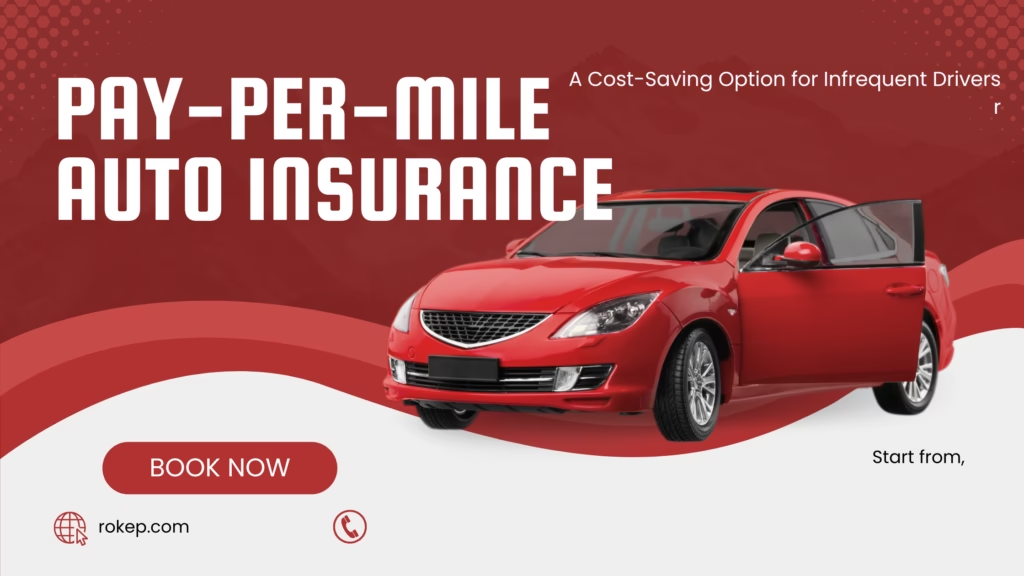Auto insurance is a necessity for all drivers, but traditional flat-rate policies don’t always reflect individual driving habits. For people who drive less frequently, pay-per-mile auto insurance offers a refreshing alternative. By charging a base fee and a small per-mile rate, this innovative model tailors costs directly to usage, potentially saving hundreds of dollars annually. With the rise of remote work and growing urban populations relying on public transportation, pay-per-mile insurance is becoming increasingly relevant. This article explores the mechanics of pay-per-mile insurance, its benefits, ideal candidates, privacy considerations, and tips for transitioning.
How Pay-Per-Mile Auto Insurance Works
Pay-per-mile insurance operates on a simple principle: you pay for how much you drive. Insurers typically calculate premiums using two components:
- Base Rate: This is a fixed monthly fee covering factors like your age, vehicle type, and location.
- Per-Mile Rate: An additional charge per mile driven, tracked using a telematics device or smartphone app provided by the insurer.
For example, suppose an insurer charges a $30 base rate and $0.05 per mile. A driver traveling 400 miles in a month would pay:
The system ensures that drivers only pay for what they use, unlike traditional plans that assume an average mileage of 13,500 miles annually and set premiums accordingly.
Benefits of Pay-Per-Mile Insurance
1. Cost Savings
Pay-per-mile insurance can result in significant savings for drivers who log fewer miles than the national average. For instance, retirees, remote workers, or occasional weekend drivers could cut their premiums by as much as 50%, according to data from the Virginia DMV’s Mileage Choice Program.
2. Fair Pricing
This model ensures fairness by basing costs on actual usage. Traditional policies often factor in variables like credit scores or demographics, which may not always correlate with risk. Pay-per-mile insurance removes this bias, rewarding drivers who use their vehicles sparingly.
3. Encourages Eco-Friendly Behavior
Knowing that each mile adds to their monthly bill, drivers might be motivated to consolidate trips, use public transportation, or carpool. This not only saves money but also reduces carbon footprints, supporting environmental goals.
4. Customization and Flexibility
Many providers offer optional GPS tracking for detailed mileage reporting, but drivers can often opt for basic non-GPS trackers to safeguard privacy. This flexibility allows users to choose plans that suit their preferences and comfort levels.
Who Benefits Most from Pay-Per-Mile Insurance?
1. Remote Workers and Freelancers
With remote work becoming the norm, daily commutes have drastically reduced for many. A 2023 study by the Bureau of Labor Statistics found that over 40% of jobs offer some form of remote flexibility, making pay-per-mile insurance a logical choice for these workers.
2. Retirees
Retired individuals typically drive less than working adults, often using their vehicles for errands, leisure, or occasional road trips. Pay-per-mile insurance aligns well with their lower mileage needs.
3. Urban Residents
City dwellers with access to robust public transit systems or rideshare services like Uber or Lyft may find their cars sitting idle for days or weeks. Pay-per-mile insurance allows them to maintain coverage without overpaying.
4. Multi-Car Families
Families with several vehicles often have one or more cars that see limited use. For these vehicles, pay-per-mile policies are an excellent way to lower insurance expenses.
Addressing Privacy Concerns
One potential drawback of pay-per-mile insurance is the use of telematics devices, which collect driving data to calculate mileage. Privacy-conscious drivers may worry about the collection of location or behavioral data.
To address these concerns:
- Many insurers offer non-GPS tracking devices, which only record the number of miles driven without collecting location data.
- Programs like Virginia’s Mileage Choice emphasize strict confidentiality, ensuring that data is used solely for calculating premiums and is not shared with third parties
Virginia Department of Motor Vehicles
. - Drivers should carefully review their insurer’s privacy policies and choose options that align with their comfort levels.
Major Pay-Per-Mile Insurance Providers
Several major insurers have embraced the pay-per-mile model, offering competitive rates and features:
- Metromile: Among the pioneers of pay-per-mile insurance, Metromile uses a plug-in device to track mileage and offers an easy-to-use app for monitoring trips and expenses.
- Allstate Milewise: A popular choice for flexible pay-as-you-drive policies, Milewise provides a transparent breakdown of base and mileage costs.
- Liberty Mutual ByMile: This program combines Liberty Mutual’s standard coverage options with a mileage-based pricing structure, ensuring comprehensive yet affordable insurance.
It’s worth noting that availability varies by state. The Washington State Office of the Insurance Commissioner advises drivers to compare quotes and coverage details before selecting a provider Washington Insurance Commissioner.

Steps to Transition to Pay-Per-Mile Insurance
Switching to pay-per-mile insurance is straightforward. Here’s a step-by-step guide:
- Evaluate Driving Habits: Track your monthly mileage for a few months to determine if pay-per-mile insurance suits your needs. If you consistently drive fewer than 12,000 miles annually, this option is likely beneficial.
- Research Providers: Compare base rates, per-mile costs, and additional features offered by insurers in your area. Look for customer reviews and check state-specific regulations.
- Install the Tracking Device: Most insurers provide easy-to-install telematics devices or apps. Ensure you understand the setup process and privacy features.
- Monitor Your Costs: Regularly review your monthly statements to verify accuracy and understand how your driving impacts costs.
Potential Drawbacks of the Pay-Per-Mile Insurance
While pay-per-mile insurance offers numerous benefits, it may not suit everyone. Drivers with unpredictable travel patterns or those who frequently exceed average mileage may find traditional policies more cost-effective. Additionally, the reliance on telematics devices can be a barrier for those uncomfortable with technology.
Government Support for Mileage-Based Programs
The concept of mileage-based fees has also gained traction among government entities. For example:
- Virginia’s Mileage Choice Program offers an alternative to flat highway use fees, charging participants based on miles driven. This initiative underscores the broader benefits of usage-based systems for both drivers and infrastructure funding
. - The Federal Highway Administration (FHWA) has explored pilot programs testing mileage-based user fees, indicating growing interest in shifting towards fairer, usage-based models for various services
Department of Insurance, SC
Final Thoughts
Pay-per-mile auto insurance represents a smart, cost-effective choice for infrequent drivers, aligning premiums with actual vehicle usage. It not only delivers savings but also promotes mindful driving habits and environmental sustainability. By leveraging technology, this innovative insurance model is transforming the industry, offering a practical alternative for today’s evolving transportation needs.
For more information, explore government programs like the Virginia DMV’s Mileage Choice or consult resources from the Federal Highway Administration to understand the growing role of mileage-based systems in modern infrastructure.
